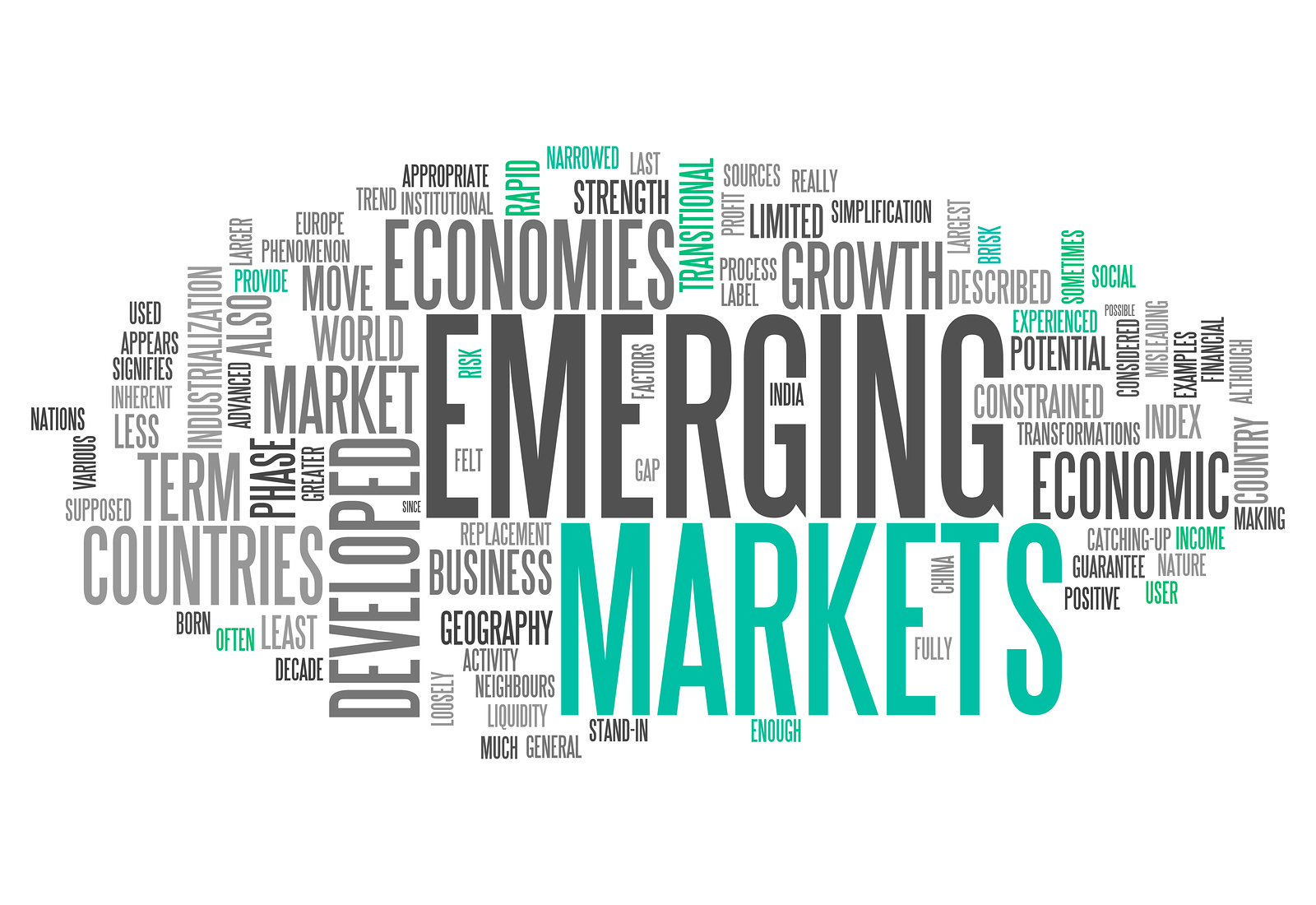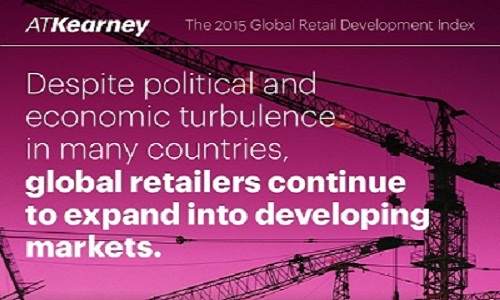
A.T. Kearney's Global Retail Development Index (GRDI) has guided global retailers with their strategic investments since 2002, a period in which the retail environment in developing markets has undergone massive transformation. The latest edition focuses on the fact that retailers' increased understanding of developing countries is more important today than ever before, as these markets struggle with shifting economic and political trends—sometimes in an extremely short timeframe.
Guide to future prospects of the emerging markets
Overall, retailers over the past year took a longer-term view of developing markets,
 staying put in
turbulent regions while making targeted investments in areas of growth. In the Middle East and Latin America, for example, retailers took a more cautious approach to international expansion, but at the same time few made significant market exits, GRDI states. However Russia is an exception, where the heightened political risk prompted sizeable closures or complete exits from players such as Adidas, franchisee Maratex, and Mexx, among others.
staying put in
turbulent regions while making targeted investments in areas of growth. In the Middle East and Latin America, for example, retailers took a more cautious approach to international expansion, but at the same time few made significant market exits, GRDI states. However Russia is an exception, where the heightened political risk prompted sizeable closures or complete exits from players such as Adidas, franchisee Maratex, and Mexx, among others.
The GRDI ranks the top 30 developing countries for retail investment, using more than 20 macroeconomic and retail-specific variables to identify not only the markets that are most successful today, but also those that offer future potential. In this year's special feature, it examines the prospects for luxury goods in developing markets. Luxury remains a bright spot in emerging markets, as the wealthy have proven less vulnerable to economic woes than the general population, and mall developers have taken advantage of increased consumer spending and mobility. In that section, it takes a look into which markets present the most long-term opportunity and how luxury brands are adapting their strategies to succeed.
The relative instability in the developing world is reflected in the 2015 rankings, the index finds. In the Middle East, markets were rocked by a record drop in oil prices and ongoing regional conflicts. Latin America falls from last year's heights as growth has decelerated amid concerns over structural economic issues. Meanwhile, Russia takes a big step back in the rankings under the weight of international sanctions and a financial crisis.
Regional winners this year include Asia, which outpaced other regions despite a slowdown in growth. China is the GRDI's top country for the first time since 2010, and its retail market is expected to grow to $8 trillion by 2022. Sub-Saharan Africa continues to make inroads into the rankings, with three countries (Botswana, Nigeria, and Angola) in the top 30 and several more on the verge of entering soon. And across the world, ‘small gems’ such as Uruguay, Qatar (ranked for the first time), and Mongolia provide pockets of untapped potential in less populated markets.
One of the GRDI's recurring themes is the ‘window of opportunity’ for investing in physical retail in developing markets. The concept is based on the reality that markets pass through four stages of retail development (opening, peaking, maturing, and closing) as they evolve from informal trading to more mature, organized markets, in a process that typically spans 10 to 15 years. This year’s index shows how markets such as Peru and Indonesia are beginning to peak, while others such as Chile and Mexico are near maturation. It also shows that the typical path and time frame can vary. For example, Russia's development has taken a nonlinear path as the country took a step back in 2014 due to increased risk.
A look at the changing dynamics of luxury segment
Many luxury brands struggled in 2014 amid lower economic growth and political instability in developing markets. Several brands shifted their short-term attention back to growth opportunities in United States, which is rebounding nicely post-financial crisis. Still, developing markets remain long-term targets: Today, emerging markets comprise about 30 per cent of the global luxury market. And with wealth creation opportunities and the fast growth in the number of high-net-worth individuals, developing markets will continue to grab share. In this year's special feature, the report examines luxury in the GRDI top 30 markets and discusses how luxury brands are adapting their strategies in order to succeed in a diverse and evolving landscape.
To understand the level of luxury development in emerging markets, report analyzed 15 leading luxury brands — the ‘Luxury 15’—and their standalone store presence in the GRDI's top 30 countries. In general, brands' presence in countries tends to increase with the size of the wealthy population and is an indicator of the ability and predisposition of local consumers to buy luxury. Emerging markets fall into three tiers of development, with different implications for brands looking to enter or expand in the markets.
Established luxury markets are Brazil, China, Kuwait, Malaysia, Qatar, Russia, Saudi Arabia, Turkey, and the UAE, Middle of the pack luxury destinations include Azerbaijan, Colombia, Jordan, Kazakhstan, Mexico, India, Indonesia, Panama, and the Philippines and emerging luxury markets include Angola, Botswana, Chile, Mongolia, Nigeria, Oman, Peru, Sri Lanka, and Uruguay. The report indicates that opportunities for luxury abound in developing markets; however luxury brands' strategies have to be tailored to the local market to succeed. To minimize risk, established luxury markets such as China and the UAE are safe yet competitive environments. In mid-tier markets such as India, players need to actively build their brands and be ready to pounce once luxury real estate becomes available. For those that are more intrepid, breaking ground in new frontiers could pay off big in the long run if they can get past the initial challenges. Following is a closer look at these three tiers of markets.
Developing markets hold exciting prospects
The 2015 GRDI reflects a retail environment in developing markets filled with exciting challenges. The role of these markets sources of growth, it says, continues to entice global retailers, which are still investing in building a long-term advantage. Even as they become more selective in their expansion strategies in new frontiers, they are clearly committing to the long haul.
www.atkearney.com

 staying put in
staying put in












